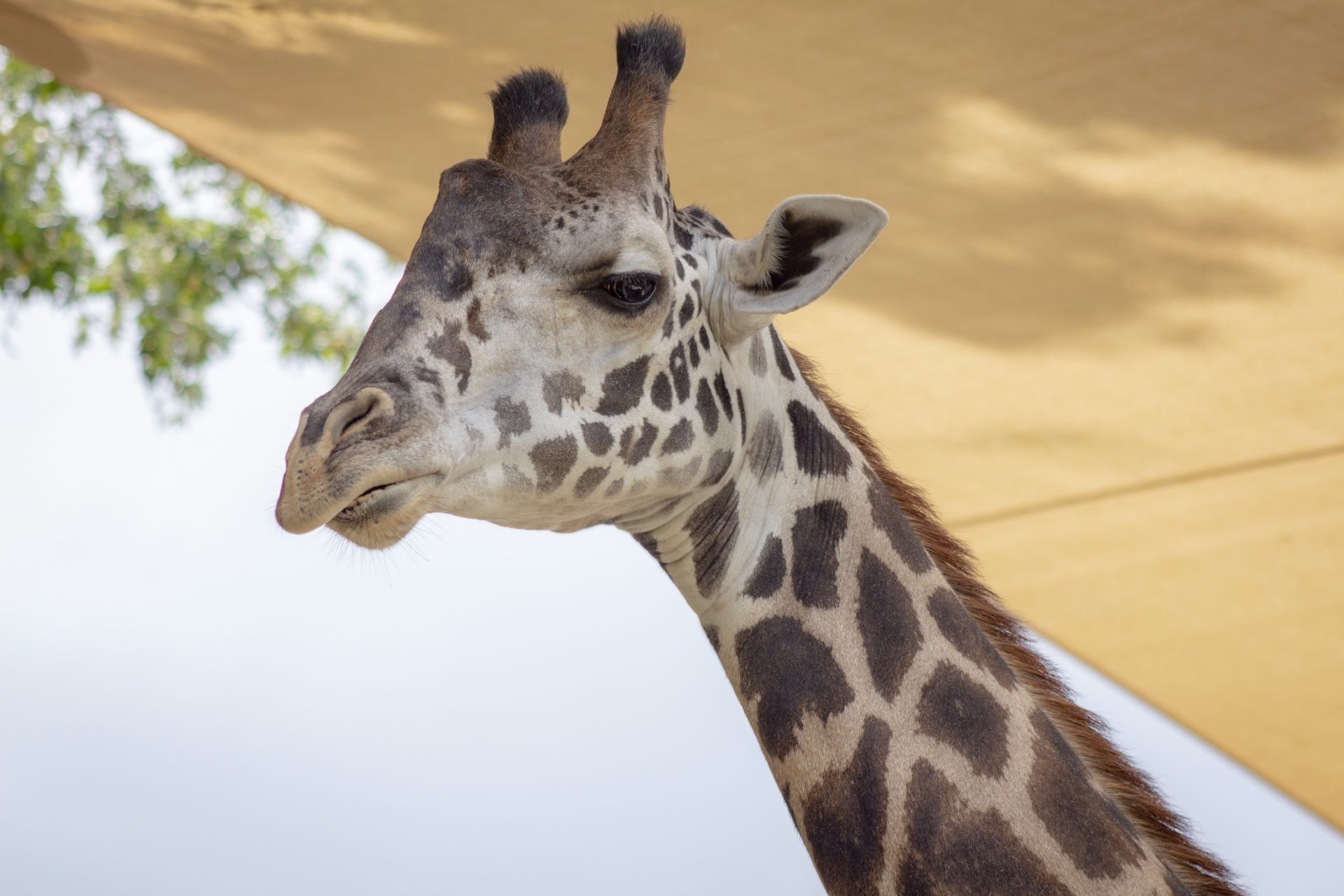
Giraffes are the tallest land mammal in the world, and serve an important role in their environment as a pollinator and seed disperser. As giraffes move from treetop to treetop, pollen gets stuck to their ossicones, and is transferred between trees, aiding in pollination! Giraffe droppings usually contain seeds that can germinate and grown into a new tree.
Each subspecies of giraffe has a distinctive type of coat, but did you know an individual's coat pattern is like your fingerprints? No two giraffes have the exact same pattern! Giraffes live in the savannas of Africa, feeding on leaves and flowers. Their height gives them an advantage over other herbivores. They use their long purple prehensile tongue to rip leaves off branches. The giraffe's height also gives them an advantage when looking out for predators. Giraffes move so that their front and back legs on each side move forward together. They can run around 35 miles per hour! If forced to defend themselves, they have a powerful and deadly kick. Giraffe are over 15 feet tall as adults and are 6 feet tall when born.

Giraffes in the wild are facing a silent extinction: a 40% decline in population in the last three decades. We refer to this as a "silent extinction" because the decline of giraffes have been overshadowed by concerns for other animals such as elephants and rhinos. Factors leading to their decline include habitat loss and fragmentation, as well as poaching.

Nikki
Did you know you have something in common with the tallest land mammal? We have the same number of bones in our necks as giraffes : 7 cervical vertebrae.
Sub-Saharan Africa
Savannas, grasslands, open woodlands
Average height 5.6m (18 ft) | 953.8–1811kg (2102-3992 lbs)
Leaves, flowers, fruit
Lion, leopards, hyenas, crocodiles
Size, kicking, vocalizations
One baby with a gestation period of around a year.
Vulnerable
10–15 years
